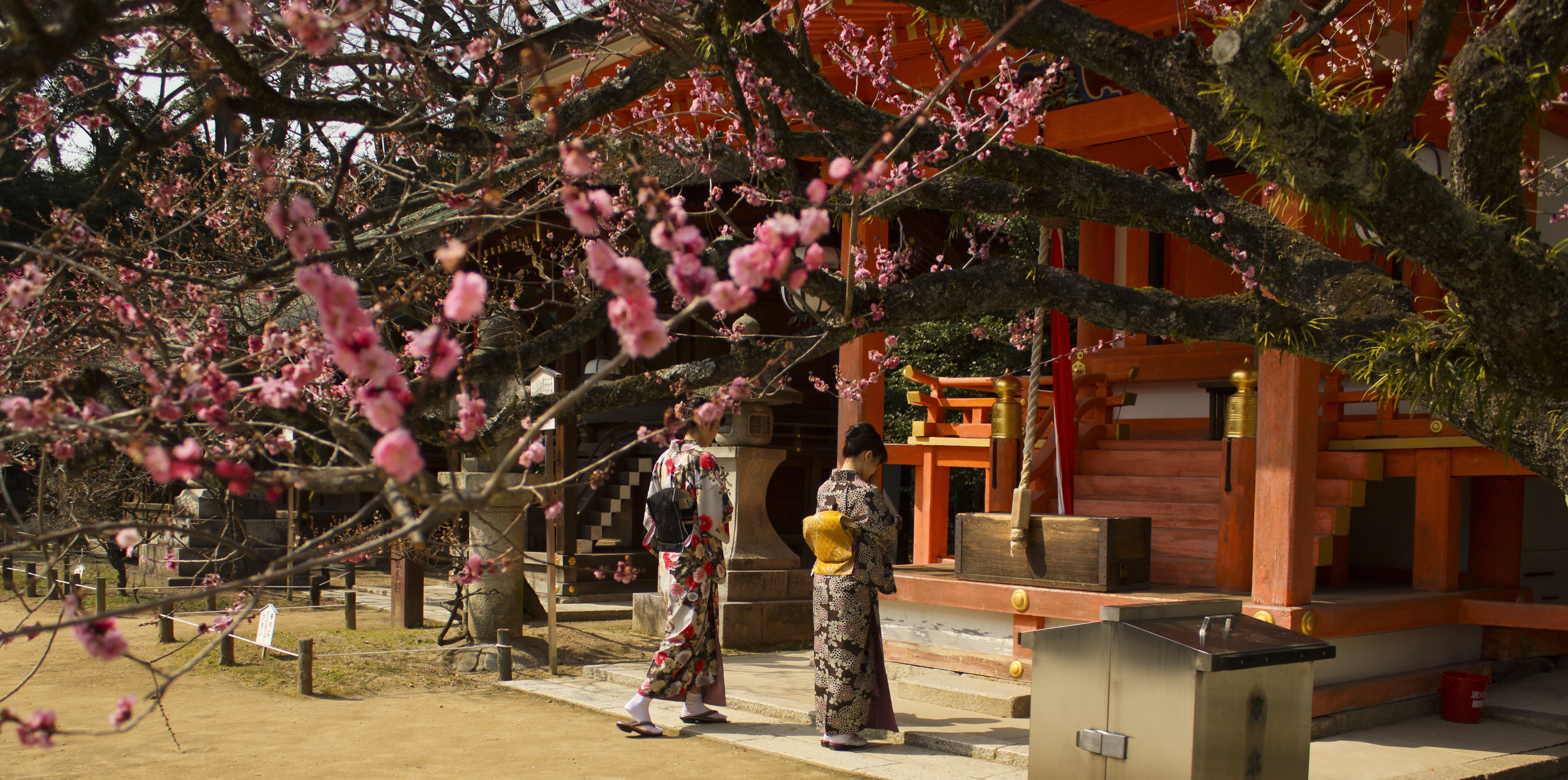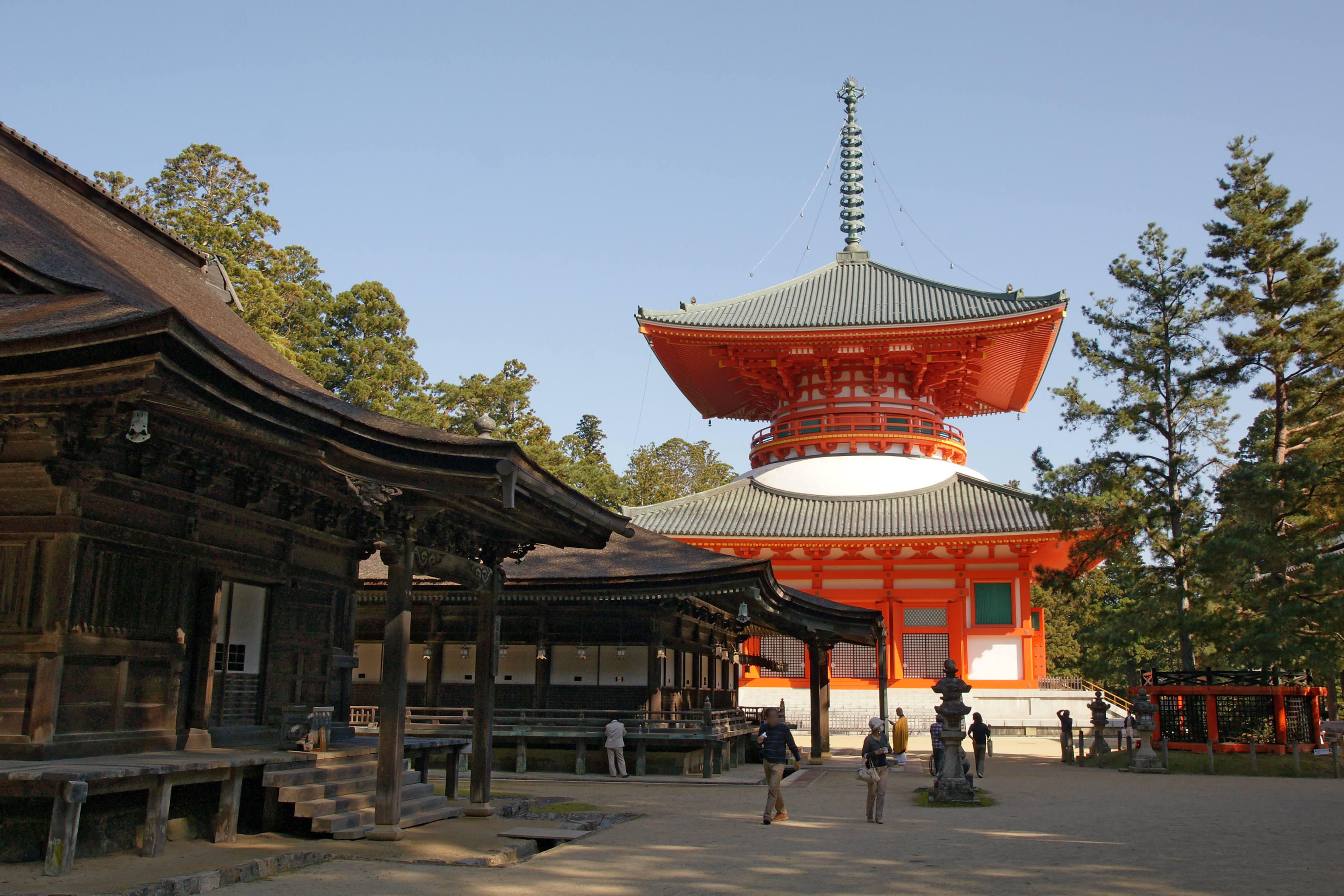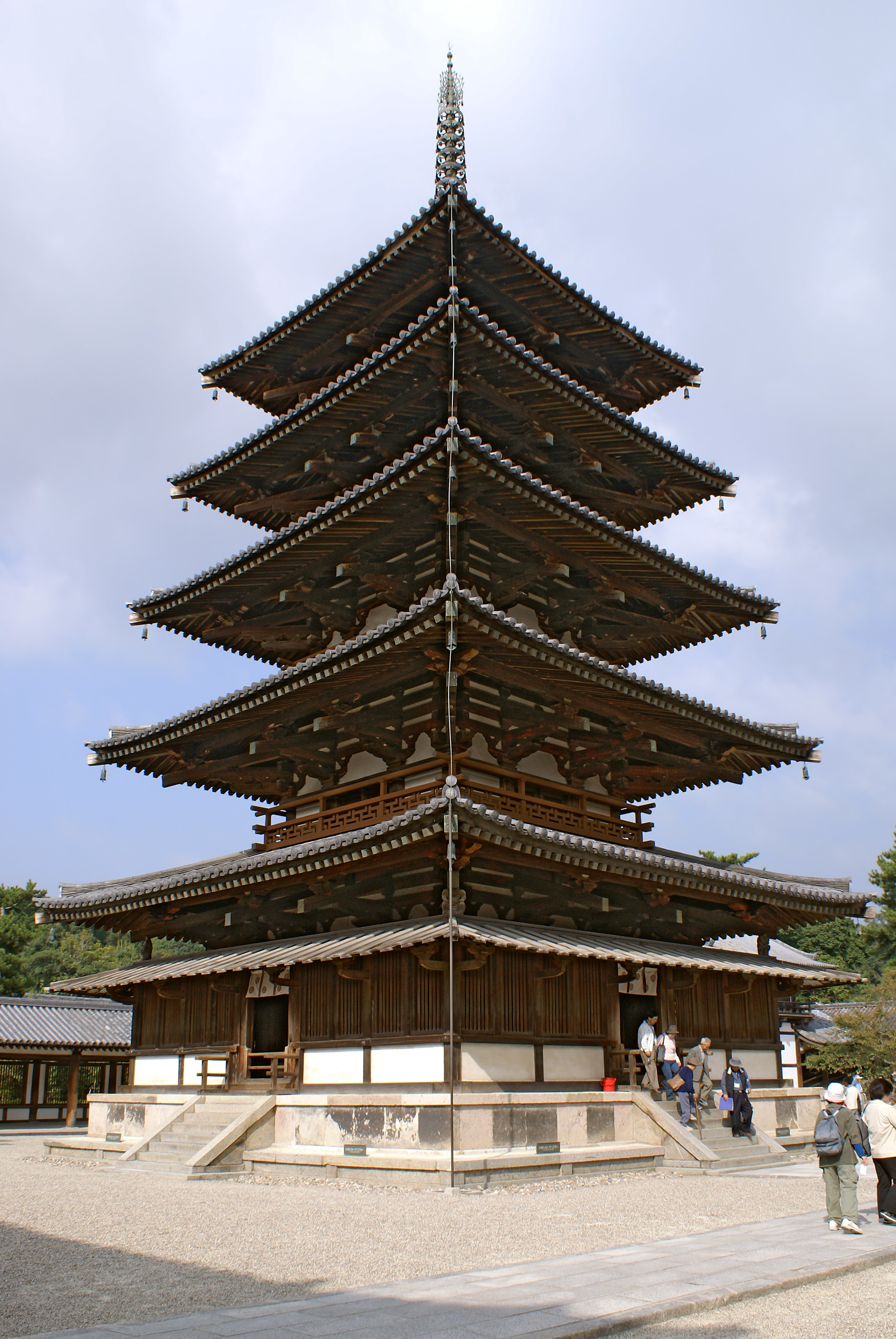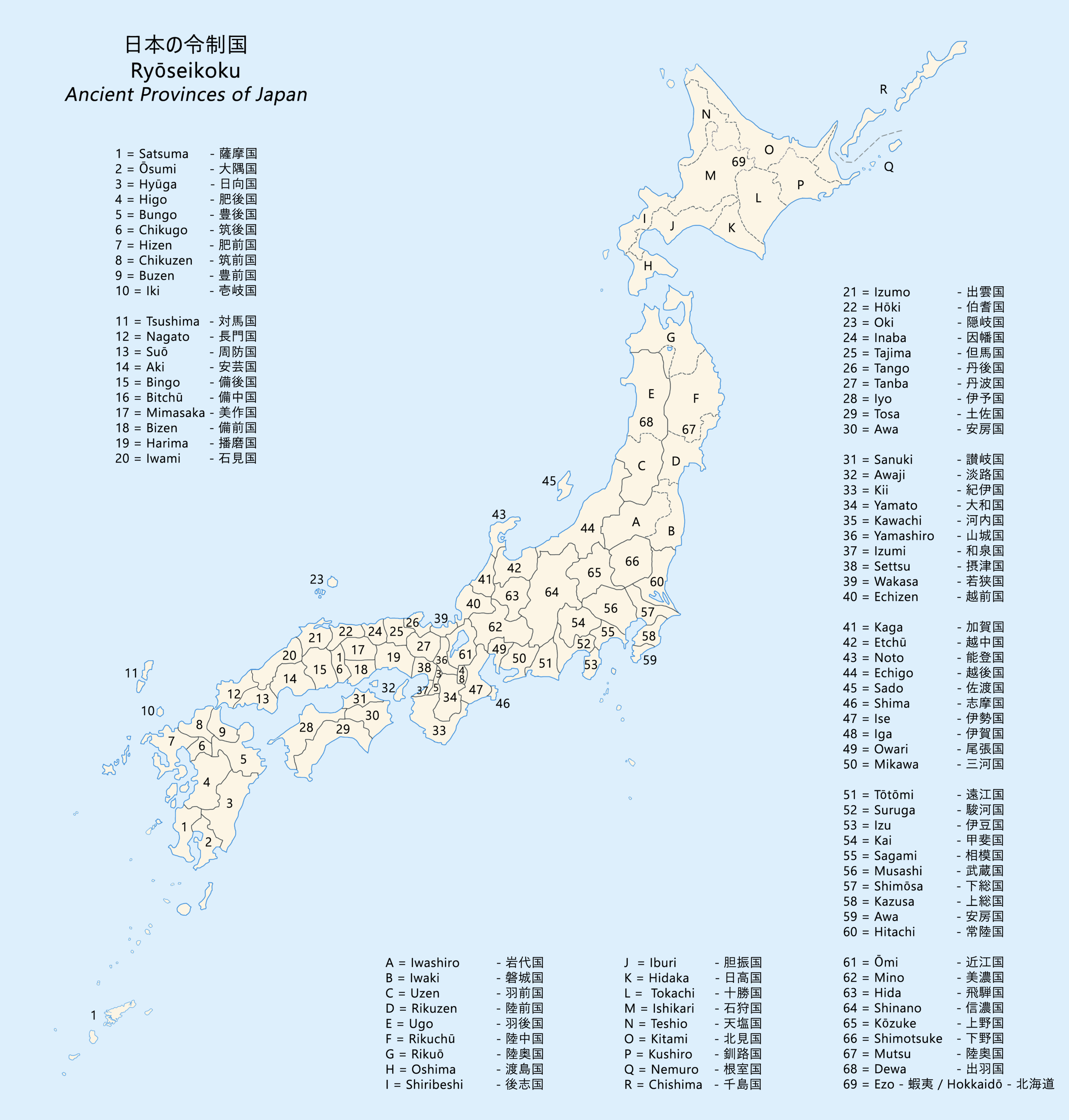|
Tō
Multi-storied pagodas in wood and stone, and a ''gorintō'' Pagodas in Japan are called , sometimes or and historically derive from the Chinese pagoda, itself an interpretation of the Indian ''stupa''. Like the ''stupa'', pagodas were originally used as reliquaries but in many cases they ended up losing this function. Pagodas are quintessentially Buddhist and an important component of Japanese Buddhist temple compounds but, because until the Kami and Buddhas Separation Act of 1868, a Shinto shrine was normally also a Buddhist temple and vice versa, they are not rare at shrines either. The famous Itsukushima Shrine, for example, has one. After the Meiji Restoration the word ''tō'', once used exclusively in a religious context, came to mean also " tower" in the western sense, as for example in . Of the Japanese pagoda's many forms, some are built in wood and are collectively known as , but most are carved out of stone (. Wood pagodas are large buildings with either two ... [...More Info...] [...Related Items...] OR: [Wikipedia] [Google] [Baidu] |
Buddhist Temples In Japan
Buddhist temples or Buddhist monasteries together with Shinto shrines, are considered to be amongst the most numerous, famous, and important religious buildings in Japan.The term "Shinto shrine" is used in opposition to "Buddhist temple" to mirror in English the distinction made in Japanese between Shinto and Buddhist religious structures. In Japanese the first are called , the second . The shogunates or leaders of Japan have made it a priority to update and rebuild Buddhist temples since the Momoyama period. The Japanese word for a Buddhist monastery is ( ''kun'' reading) and the same kanji also has the pronunciation ''ji'' (''on'' reading), so that temple names frequently end in ''-dera'' or ''-ji''. Another ending, , is normally used to refer to minor temples. Such famous temples as Kiyomizu-dera, Enryaku-ji and Kōtoku-in are temples which use the described naming pattern. Etymology The Japanese word for a Buddhist temple was anciently also written phonetically 天良, ... [...More Info...] [...Related Items...] OR: [Wikipedia] [Google] [Baidu] |
Tahōtō
A is a form of Japanese pagoda found primarily at Esoteric Shingon and Tendai school Buddhist temples. It is unique among pagodas because it has an even number of stories (two). (The second story has a balustrade and seems habitable, but is nonetheless inaccessible and offers no usable space.) Its name alludes to Tahō Nyorai, who appears seated in a many-jewelled pagoda in the eleventh chapter of the Lotus Sutra. With square lower and cylindrical upper parts, a ''mokoshi'' 'skirt roof', a pyramidal roof, and a finial, the ''tahōtō'' or the larger ''daitō'' was one of the seven halls of a Shingon temple. After the Heian period, the construction of pagodas in general declined, and new ''tahōtō'' became rare. Six examples, of which that at Ishiyama-dera (1194) is the earliest, have been designated National Treasures. There are no examples in China, whether architectural or pictorial, of anything that resembles the ''tahōtō'', although there is a Song dynasty tex ... [...More Info...] [...Related Items...] OR: [Wikipedia] [Google] [Baidu] |
Shinto Shrine
A is a structure whose main purpose is to house ("enshrine") one or more '' kami'', the deities of the Shinto religion. Overview Structurally, a Shinto shrine typically comprises several buildings. The '' honden''Also called (本殿, meaning: "main hall") is where a shrine's patron ''kami'' is/are enshrined.Iwanami Japanese dictionary The ''honden'' may be absent in cases where a shrine stands on or near a sacred mountain, tree, or other object which can be worshipped directly or in cases where a shrine possesses either an altar-like structure, called a '' himorogi,'' or an object believed to be capable of attracting spirits, called a '' yorishiro,'' which can also serve as direct bonds to a ''kami''. There may be a and other structures as well. Although only one word ("shrine") is used in English, in Japanese, Shinto shrines may carry any one of many different, non-equivalent names like ''gongen'', ''-gū'', ''jinja'', ''jingū'', ''mori'', ''myōjin'', ''-sha'', ''tai ... [...More Info...] [...Related Items...] OR: [Wikipedia] [Google] [Baidu] |
Shingon
Shingon monks at Mount Koya is one of the major schools of Buddhism in Japan and one of the few surviving Vajrayana lineages in East Asia, originally spread from India to China through traveling monks such as Vajrabodhi and Amoghavajra. Known in Chinese as the Tangmi (; the Esoteric School in Tang Dynasty of China), these esoteric teachings would later flourish in Japan under the auspices of a Buddhist monk named Kūkai (), who traveled to Tang China to acquire and request transmission of the esoteric teachings. For that reason, it is often called Japanese Esoteric Buddhism, or Orthodox Esoteric Buddhism. The word ''shingon'' is the Japanese reading of the Chinese word ('), which is the translation of the Sanskrit word ("mantra"). History Shingon Buddhist doctrine and teachings arose during the Heian period (794-1185) after a Buddhist monk named Kūkai traveled to China in 804 to study Esoteric Buddhist practices in the city of Xi'an (), then called Chang-an, at A ... [...More Info...] [...Related Items...] OR: [Wikipedia] [Google] [Baidu] |
Hōryū-ji
is a Buddhist temple that was once one of the powerful Seven Great Temples, in Ikaruga, Nara Prefecture, Japan. Its full name is , or Learning Temple of the Flourishing Law, the complex serving as both a seminary and monastery. The temple was founded by Prince Shōtoku in 607, but according to the '' Nihon Shoki'', in 670 all buildings were burned down by lightning. However, reconstructed at least 1,300 years ago, the Kondō (main hall) is widely recognized as the world's oldest wooden building. A fire that broke out during the dismantling and repair of the Kondō on January 26, 1949 destroyed a mural of the Asuka period, a national treasure, and shocked the Japanese. Based on this accident, the day when the fire broke out is now fire prevention day for cultural properties. In 1993, Hōryū-ji Temple, along with Hokki-ji, was registered as Japan's first UNESCO World Heritage Site under the name of ''Buddhist Monuments in the Hōryū-ji Area''. A tree ring survey cond ... [...More Info...] [...Related Items...] OR: [Wikipedia] [Google] [Baidu] |
Main Hall (Japanese Buddhism)
Main hall is the building within a Japanese Buddhist temple compound ('' garan'') which enshrines the main object of veneration.Kōjien Japanese dictionary Because the various denominations deliberately use different terms, this single English term translates several Japanese words, among them ''butsuden'', ''butsu-dō'', ''kondō'', ''konpon-chūdō'', and ''hondō''. ''Hondō'' is its exact Japanese equivalent, while the others are more specialized words used by particular sects or for edifices having a particular structure. Kondō (Asuka and Nara periods) The term started to be used during the Asuka and Nara periods. A ''kondō'' is the centerpiece of an ancient Buddhist temple's ''garan'' in Japan. The origin of the name is uncertain, but it may derive from the perceived preciousness of its content, or from the fact that the interior was lined with gold. This is the name used by the oldest temples in the country.Iwanami Nihonshi Jiten A ''kondō'', for example Hōryū-ji' ... [...More Info...] [...Related Items...] OR: [Wikipedia] [Google] [Baidu] |
Ken (architecture)
The is a traditional Japanese unit of length, equal to six Japanese feet (''shaku''). The exact value has varied over time and location but has generally been a little shorter than .JAANUS It is now standardized as 1.82 m. Although mostly supplanted by the metric system, this unit is a common measurement in Japanese architecture, where it is used as a proportion for the intervals between the pillars of traditional-style buildings. In this context, it is commonly translated as "bay". The length also appears in other contexts, such as the standard length of the ''bō'' staff in Japanese martial arts and the standard dimensions of the tatami mats. As these are used to cover the floors of most Japanese houses, floor surfaces are still commonly measured not in square meters but in "tatami" which are equivalent to half of a square ken. Word Among English loanwords of Japanese origin, both ''ken'' and '' ma'' are derived from readings of the same character . This kanji grap ... [...More Info...] [...Related Items...] OR: [Wikipedia] [Google] [Baidu] |
Shichidō Garan
''Shichidō garan'' is a Japanese Buddhist term indicating the seven halls composing the ideal Buddhist temple compound. This compound word is composed of , literally meaning "seven halls", and , meaning "temple". The term is often shortened to just ''garan''. Which seven halls the term refers to varies, and 七堂 may be a misinterpretation of , meaning "complete temple".Iwanami KōjienKōsetsu Bukkyō Daijiten (広説仏教語大辞典) In practice, ''shichidō garan'' often simply means a large temple with many buildings. Etymology and history of the term in Japanese is an abbreviated form of the expression , itself a transliteration of the Sanskrit ''saMghaaraama'' (सँघाराम), literally meaning "garden for monks".JAANUS, ''garan'' A Japanese ''garan'' was originally just a park where monks gathered together with their teacher, but the term later came to mean " Buddhist temple". The word ''garan'' can be found in a record in Nihon Shoki dated 552, although no ... [...More Info...] [...Related Items...] OR: [Wikipedia] [Google] [Baidu] |
Chinese Pagoda
A pagoda is an Asian tiered tower with multiple eaves common to Nepal, India, China, Japan, Korea, Myanmar, Vietnam, and other parts of Asia. Most pagodas were built to have a religious function, most often Buddhist but sometimes Taoist, and were often located in or near viharas. The pagoda traces its origins to the stupa of ancient India. Chinese pagodas () are a traditional part of Chinese architecture. In addition to religious use, since ancient times Chinese pagodas have been praised for the spectacular views they offer, and many classical poems attest to the joy of scaling pagodas. Chinese sources credit the Nepalese architect Araniko with introducing the pagoda to China. The oldest and tallest pagodas were built of wood, but most that survived were built of brick or stone. Some pagodas are solid with no interior. Hollow pagodas have no higher floors or rooms, but the interior often contains an altar or a smaller pagoda, as well as a series of staircases for the ... [...More Info...] [...Related Items...] OR: [Wikipedia] [Google] [Baidu] |
Shinbutsu Bunri
The Japanese term indicates the separation of Shinto from Buddhism, introduced after the Meiji Restoration which separated Shinto ''kami'' from buddhas, and also Buddhist temples from Shinto shrines, which were originally amalgamated. It is a yojijukugo phrase. Background before 1868 Until the end of the Edo period, in 1868, Shinto and Buddhism were intimately connected in what was called ''shinbutsu-shūgō'' (神仏習合), to the point that the same buildings were often used as both Shinto shrines and Buddhist temples, and Shinto gods were interpreted as manifestations of Buddhas. However, the tendency to oppose Buddhism as a foreign import and to uphold Shinto as the native religion can be seen already during the early modern era, partly as a nationalistic reaction.. In a broad sense, the term ''shinbutsu bunri'' indicates the effects of the anti-Buddhist movement that, from the middle of the Edo period onwards, accompanied the spread of Confucianism, the growth of stud ... [...More Info...] [...Related Items...] OR: [Wikipedia] [Google] [Baidu] |
Shinbutsu-shūgō
''Shinbutsu-shūgō'' (, "syncretism of kami and buddhas"), also called Shinbutsu shū (, "god buddha school") Shinbutsu-konkō (, "jumbling up" or "contamination of kami and buddhas"), is the syncretism of Shinto and Buddhism that was Japan's only organized religion up until the Meiji period. Beginning in 1868, the new Meiji government approved a series of laws that separated Japanese native kami worship, on one side, from Buddhism which had assimilated it, on the other. When Buddhism was introduced from China in the Asuka period (6th century) the Japanese tried to reconcile the new beliefs with the older Shinto beliefs, assuming both were true. As a consequence, Buddhist temples (, ''tera'') were attached to local Shinto shrines (, ''jinja'') and vice versa and devoted to both kami and buddhas. The local religion and foreign Buddhism never quite fused, but remained inextricably linked to the present day through interaction. The depth of the influence from Buddhism on local re ... [...More Info...] [...Related Items...] OR: [Wikipedia] [Google] [Baidu] |
Kamakura Period
The is a period of Japanese history that marks the governance by the Kamakura shogunate, officially established in 1192 in Kamakura by the first '' shōgun'' Minamoto no Yoritomo after the conclusion of the Genpei War, which saw the struggle between the Taira and Minamoto clans. The period is known for the emergence of the samurai, the warrior caste, and for the establishment of feudalism in Japan. During the early Kamakura period, the shogunate continued warfare against the Northern Fujiwara which was only defeated in 1189. Then, the authority to the Kamakura rulers waned in the 1190s and power was transferred to the powerful Hōjō clan in the early 13th century with the head of the clan as regent ( Shikken) under the shogun which became a powerless figurehead. The later Kamakura period saw the invasions of the Mongols in 1274 and again in 1281. To reduce the amount of chaos, the Hōjō rulers decided to decentralize power by allowing two imperial lines – Northern and Sout ... [...More Info...] [...Related Items...] OR: [Wikipedia] [Google] [Baidu] |











